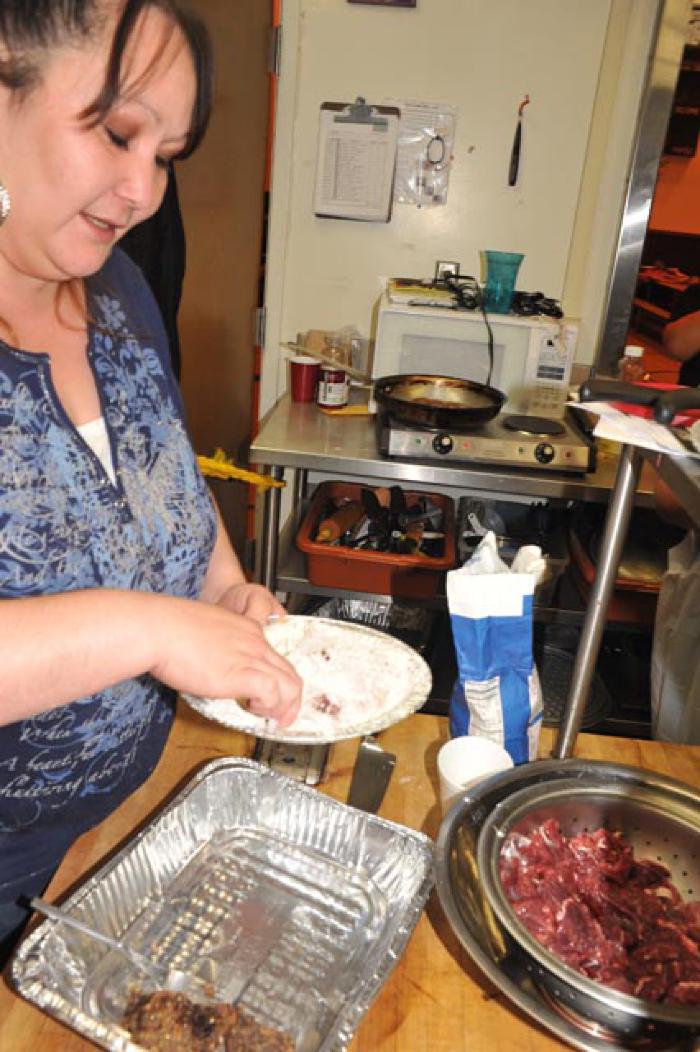Meat — Kemek

Meat has been a mainstay of the Alutiiq diet for millennia. Like their forefathers, modern Alutiiq people are accomplished hunters who fill their freezers with sea mammal, deer, and even bear meat. But successfully slaying an animal is only the first step in feeding a family. Animal carcasses have to be processed and the meat they produce transported, stored, and cooked.
In classical Alutiiq society, animals were butchered with stone tools. Hunters used cobble spalls, sharp flakes of stone knocked off of beach cobbles, as well as ulus and flensing knives ground from slate, to skin, dismember, and deflesh carcasses. Bundles of meat were then wrapped in skins or placed in woven knapsacks and transported home. Hunters traveling on foot might place a layer of fresh grass on their backs to prevent meat carried on their shoulders from bloodying their clothing. At home, hunters often aged fresh meat, hanging it for a week or two to tenderize the flesh and mellow its flavor.
Fresh meat was cooked by stone boiling. Families dropped red-hot rocks into watertight containers—baskets, wooden boxes, hollowed-out logs, and even animal stomachs—to heat their contents. They often added wild berries, particularly cranberries, to enhance the flavor of meat dishes. Roasting was another common cooking method. Alutiiq people used a flat stone slab heated in a fire to cook their meat, or they placed a roast on a skewer by the fire, turning it occasionally to help the meat cook evenly. Until the historic era when smoking, salting, and canning became popular, families air-dried meat not intended for immediate consumption. They stored this meat in wooden boxes and dipped it in oil before eating.
